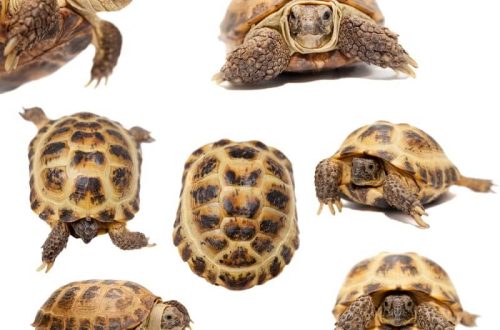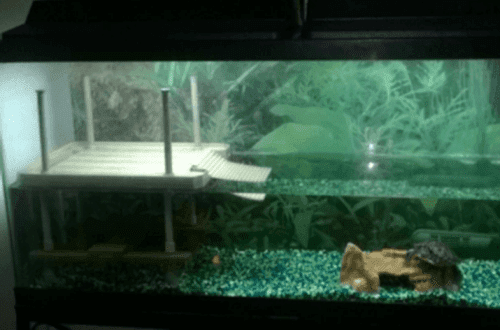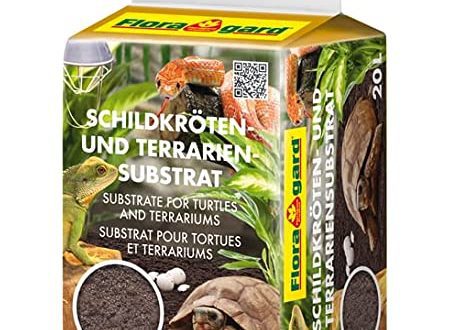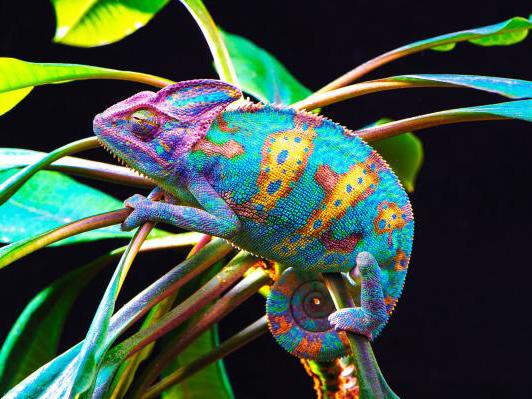
Jemenski kameleon
The Yemeni chameleon is often found in Saudi Arabia, but it is most common in Yemen, hence the name. There are two subspecies – Chamaeleo calyptratus calyptratus and Chamaeleo calyptratus calcarifer. As habitats, they choose for themselves mountainous wooded areas, where the temperature during the day does not fall below 25 degrees.
vsebina
Appearance of a domestic Yemeni chameleon
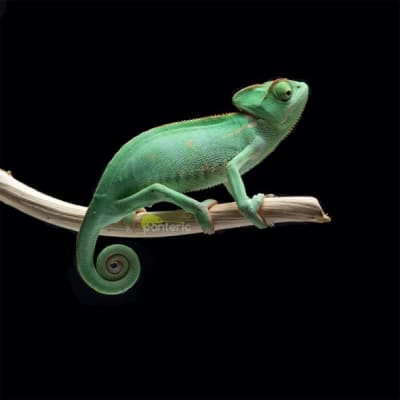
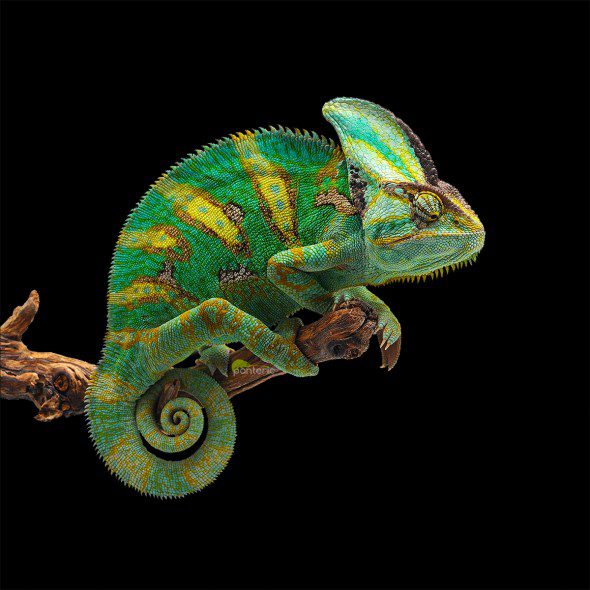
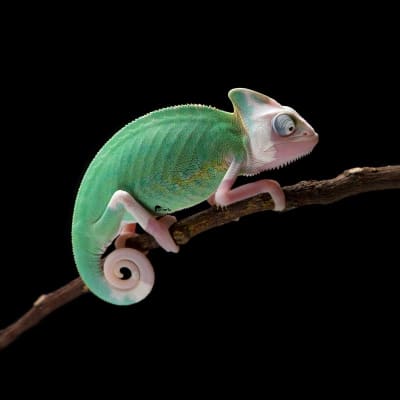
Among all the chameleons found on the planet, the Yemeni is one of the largest. In length, males often reach 55 cm, females are slightly smaller – up to 35 cm.
The easiest way to determine the sex of a Yemeni chameleon is from the first weeks of life – heel spurs are visible on the hind legs of males at the base of the hands. In females, spurs are absent from birth. With age, the spurs of males become larger, the helmet increases in size. In females, the crest is much less impressive.
Another way to distinguish a male in adults is to look at his color. Males have vertical stripes of orange or yellow.
Rules for keeping a Yemeni chameleon at home
The main task of the breeder is to provide the animal with good living conditions and a complete absence of stress.
Chameleons are very attached to their territory and tend to defend it. Therefore, it is not recommended to keep two males in one terrarium – they will constantly compete.
You should also be careful with females – you need at least two of them for one male. But to accommodate so many reptiles, you will need to significantly increase the size of the terrarium.
Arrangement of the terrarium
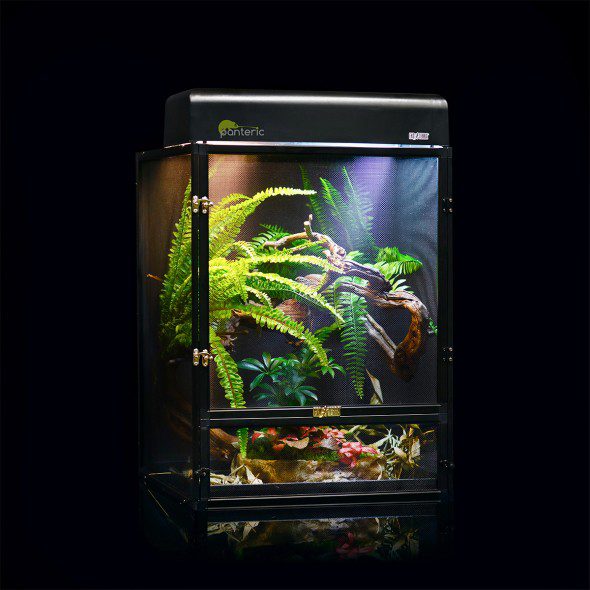
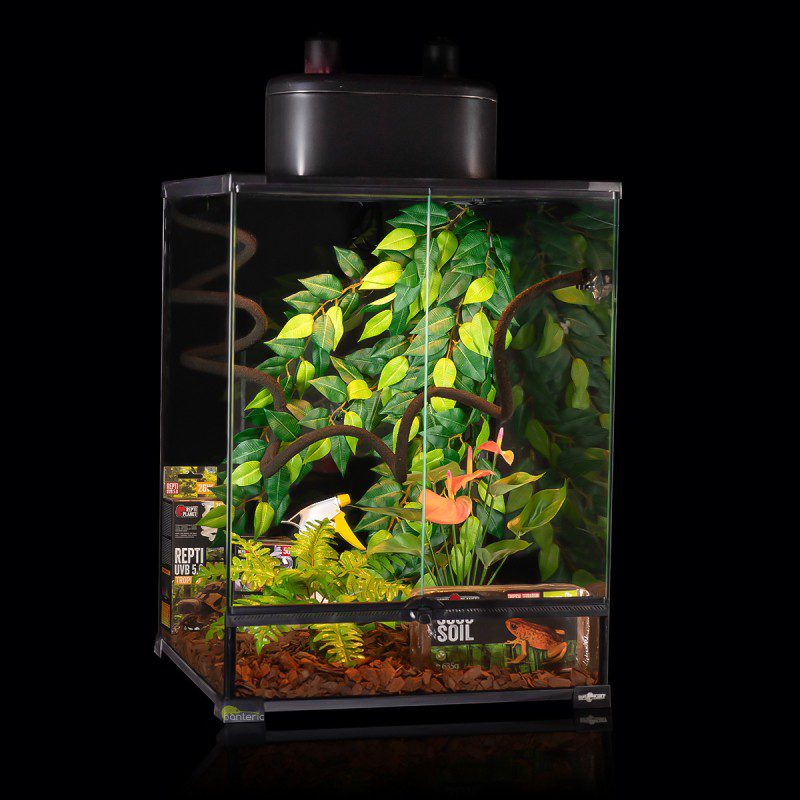
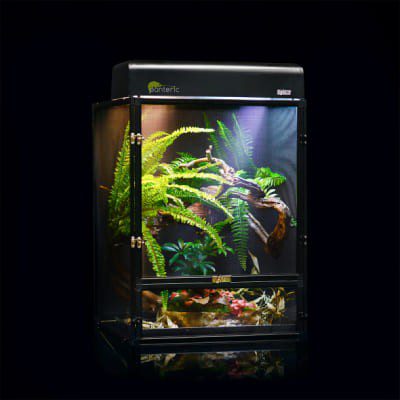
In order for your pet to be in a good mood, not stressed, not sick, it must be placed in a spacious vertical terrarium. Much attention should be paid to ventilation – it must be flowing.
Chameleons are prone to respiratory diseases. The air must not be allowed to stagnate.
There should be enough space for one adult. For a male – 60 × 45 × 90 cm, for a female – 45 × 45 × 60 cm (L x W x H). But if you have the opportunity to expand it, it will only be better.
In nature, reptiles spend a lot of time on trees, so snags with many branches are installed inside the terrarium, and lianas are hung. Chameleons are very fond of camouflage and are stressed in open areas. At home, this must be compensated by an increase in the amount of foliage on the branches, albeit artificial.
As a substrate, it is best to use woody soil. It holds moisture well and does not mold.
Lighting standards
When organizing the content of the Yemeni chameleon, much attention should be paid to lighting. For a pet, you need to build a whole system, the main element of which is fluorescent lamps with an average level of UV radiation.
In the terrarium, you need to observe the lighting switching mode depending on the time of day. For this, a timer is used – the minimum length of daylight hours is 11 hours, and the maximum is 13. It is not recommended to exceed these readings.
Temperature, humidity and heating methods
Since the reptile lives in a warm, humid climate, you need to create a similar atmosphere indoors. The main source of heat is lamps. Depending on the size of the terrarium and the temperature in the room, light bulbs of various power from 25 to 150 watts are selected.
Lamps are placed in the upper part of the terrarium above the grid. Be sure to use thermometers to monitor the temperature so you always have an idea of how comfortable the reptile is inside. Light bulbs must be turned off when daylight hours for the pet ends.
The Yemeni chameleon is a cold-blooded animal. This means that if the outside temperature drops too much, the chameleon can get sick or die. The optimum temperature range for keeping is 27-29 degrees. A special warm-up point is also created inside, where the temperature rises to 35 degrees. This will allow the reptile to move to a warmer zone according to its mood for proper digestion of food.
The night temperature is below standard and ranges from 22 to 24 degrees. A decrease to the level of 14-15 degrees is considered critical for the animal.
You should also pay attention to humidity. Comfortable indicators for living are from 20 to 55%. High humidity stimulates the appearance of problems with the respiratory system, and low humidity – skin diseases.
Food and diet
When keeping a Yemeni chameleon at home, you will have to feed the reptile with insects. Most often, crickets, locusts and caterpillars are eaten. At least once a week, it is worth diluting the diet with plant components, giving the pet fresh leaves.
The feeding mode is selected individually depending on the age and size of the reptile.
| Starost (v mesecih) | Pogostost hranjenja | Type and amount of feed (per meal) |
|---|---|---|
| 1-6 | dnevni | 10 brother-in-law |
| 6-12 | V enem dnevu | Up to 15 crickets or 3-5 locusts |
| od 12 | 2-3 krat na teden | 15-20 crickets or 3-7 locusts |
To feed the reptile with useful substances, you need to take care of the pollination of insects. They are sprinkled with special vitamins or calcium. Insects can be fed with tweezers or released inside the terrarium and watch your pet catch them with his tongue. Feed should be given only in the morning and afternoon. Feeding in the evening is not recommended.
It is better not to be limited only to insects and periodically introduce plant foods into the diet. Especially reptiles love juicy fruits and berries. They can be served from the second month of life.
Take care of the correct drinking regimen. Since in nature, Yemeni chameleons usually feed on dew, they should only be given fresh water. It is best to install a drip drinker or waterfall. At least twice a day, the terrarium should be sprayed with clean water from a spray bottle, then the pet will be able to lick the remaining droplets from the leaves and quench their thirst.
POMEMBNO carefully monitor the drinking of the chameleon, teach it to lick off water droplets when spraying, if necessary, supplement it with a syringe (without a needle).
Cleaning and hygiene rules
Remains of insects and excrement must be removed from the terrarium in a timely manner. This is done with tweezers at least once a week. Wet cloths are used to clean glass. In our store you will find glass cleaners that have a disinfecting effect.
If you use a substrate for laying on the bottom, mushrooms may sprout on it over time. This is fine. Also, the periodic appearance of midges is not dangerous – after some time they will disappear by themselves.
First human contact
When you first bring the reptile home, you need to disturb the animal as little as possible in order to reduce the stress level and allow the chameleon to adapt to the new place.
In order for the chameleon to get used to you faster, at first we advise you to feed him from your hands. Sometimes you can get a pet and hold it in your arms.
Gradually, the reptile will get used to you and will even crawl on its own hands. There are also especially friendly individuals who spend a lot of time with a person and are strongly attached to him.
If the chameleon is outside the terrarium, you need to make sure that the room is clean, there are no other animals and no draft. We do not recommend leaving the reptile outside the special habitat area.
Reja
Some breeders are actively involved in breeding their pets.
The female remains pregnant for about a month, after which she lays up to 50 eggs. At this time, special conditions will need to be prepared for her, as well as taking care of proper incubation. In our store you will find everything you need for breeding reptiles. We will give advice and equip the egg incubator.
On our site there are many photos of Yemeni chameleons, as well as a video, after watching which you will get acquainted with the habits of a reptile.
Panteric Pet Shop supplies only healthy animals, helps with the selection of everything you need for terrarium equipment. Our consultants answer all your questions, give important advice on breeding.
Povedali vam bomo, kako skrbeti za navadno drevesno žabo doma. Pojasnili vam bomo, kaj mora vsebovati prehrana in kaj bo pomagalo podaljšati njegovo življenje.
Pogovorimo se podrobneje o terariju za agamo, ogrevanju, optimalni osvetlitvi in pravilni prehrani plazilca.
V tem članku bomo razložili, kako skrbeti za iranskega gekona doma. Povedali vam bomo, kako dolgo živijo kuščarji te vrste, kaj jih je treba hraniti.



